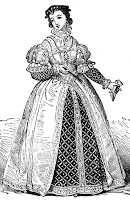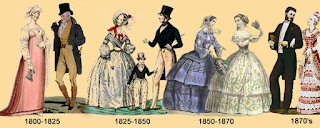England, one of the powerful countries in the world, is a part of United
Kingdom. They are
Victorian Era and Elizabethan Era which have several characteristics in common.
All women
had limited right, it is a male who makes decisions for them without any
consultation or affirmation, in both eras it is a very interesting fact that,
although it is a woman who sat on the throne as queen, women in general have so
limited rights also wat was common in both eras was the fact that fashion
played a very significant role not was just merely a way of dressing but
something that defined the social order, dressing inspired the way people
dressed in the both the eras.
 Ladies
in the Elizabethan times required significant number different approaches of
demonstrating to their design styles. Components for example, puffy sleeves,
tight-fitting bodices for dresses, and ruffles demonstrated status clinched
alongside particular social order. They likewise utilized different sorts about
clothes to settle on themselves show up additional petite over they really
were. The upper class of Elizabethan England wore elegant
and luxurious clothing that were made of expensive velvet, exotic silk and
satin. Only the members of the Royal Family were allowed to own robes which
were trimmed with ermine. Quite the contrast to the luxurious clothing of the
affluent was the clothing worn by peasants. They wore clothing made of simple
materials such as English cotton, wool and leather. Woolen clothing was in fact quite popular among the
working as well as domestic classes since it was rather cheap and the wool
trade saw an increase during the period. Elizabethan England Clothing for women usually consisted of gowns,
underclothing, corsets, hats, ruffs, collars and shoes. The men wore doublets,
underclothing, breeches, ruffs, collars, hats and shoes. Women often wore fancy
jewelry but for both men and women ruffs were an indispensable item that adds
to their elegant look. The Queen herself wore many elaborate collars. The ruffs
were worn around the neck or wrists and became significantly larger later.
Ladies
in the Elizabethan times required significant number different approaches of
demonstrating to their design styles. Components for example, puffy sleeves,
tight-fitting bodices for dresses, and ruffles demonstrated status clinched
alongside particular social order. They likewise utilized different sorts about
clothes to settle on themselves show up additional petite over they really
were. The upper class of Elizabethan England wore elegant
and luxurious clothing that were made of expensive velvet, exotic silk and
satin. Only the members of the Royal Family were allowed to own robes which
were trimmed with ermine. Quite the contrast to the luxurious clothing of the
affluent was the clothing worn by peasants. They wore clothing made of simple
materials such as English cotton, wool and leather. Woolen clothing was in fact quite popular among the
working as well as domestic classes since it was rather cheap and the wool
trade saw an increase during the period. Elizabethan England Clothing for women usually consisted of gowns,
underclothing, corsets, hats, ruffs, collars and shoes. The men wore doublets,
underclothing, breeches, ruffs, collars, hats and shoes. Women often wore fancy
jewelry but for both men and women ruffs were an indispensable item that adds
to their elegant look. The Queen herself wore many elaborate collars. The ruffs
were worn around the neck or wrists and became significantly larger later.
Where in the Victorian era the
dresses became slimmer and Skirts went from
straight to being spread over large hoops. Head gear was a style all its
own, there was a range of lavishly decorated hats, covered with feathers and
flowers, feathers, lace, and flowers would still be used for decoration. To
wear those dresses, it was necessary to have a cinched-in waist, was worn by
upper and middle class ladies. Working-class women were more modest, because of
the exposure of flesh to cool air, shawls joined. Satins, silks, and heavy
velvets for the older generation were the norm. For younger society ladies who
were on the look-out for "a good catch", the lighter the material,
the better, fragile gauze dresses, covered with bows or flowers, were made to
catch a prospective husband's eye. On average, these dresses were worn only
once or twice and then thrown away. Middle-class women bought either garments,
or ready-made clothes, with the idea that they would last, the garment would at
some point be cut-down so that it could be worn by children. For the well-dressed female tradesman bright silk
scarf would be worn around the neck, and a flower-strewn bonnet would adorn the
head. Brightly polished boots would be proudly shown beneath a many petticoat
skirt.
Dressing was
always a way of living in both the eras, the way people wore clothes did change
with the coming in of new fashion but the role fashion played did not change in
both the eras.


No comments:
Post a Comment